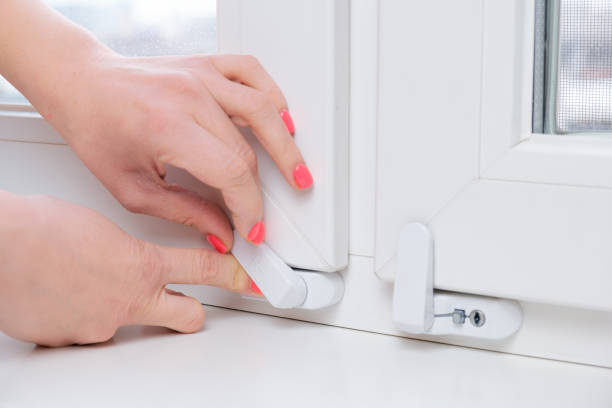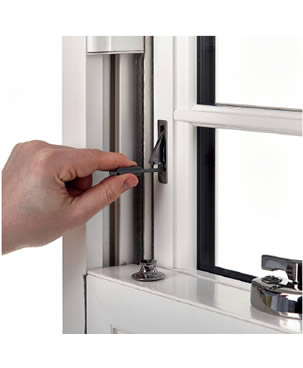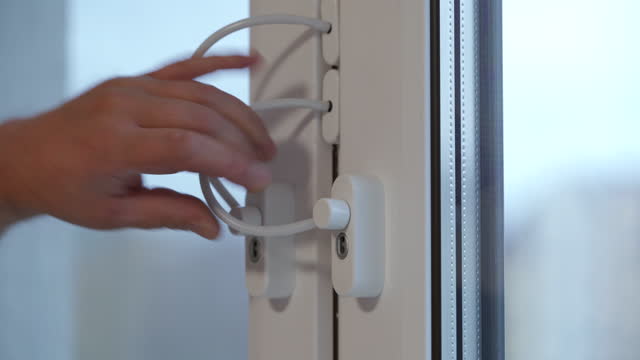If you’ve misplaced the key to your sliding window lock and need to open it, you’re not alone. This predicament can occur to anyone and it’s important to know that there’s a solution. In this guide, we will walk you through the simple steps on how to open a sliding window lock without a key.
Please note that this information should only be used responsibly and ethically.
The ability to open a sliding window lock without a key is a crucial skill, particularly in instances where the key has been misplaced or lost. It’s not always feasible to call a locksmith immediately, and in some emergency scenarios, rapid access through a locked sliding window could be vital.
However, it’s important to stress that this knowledge should be employed ethically and responsibly, ensuring we respect the privacy and security of others. This guide aims to provide practical, step-by-step instructions to help you navigate this situation, should you ever find yourself facing it.
Safety Precautions
Before we delve into the process, it’s paramount to underline the significance of safety and legality when attempting to open a sliding window lock without a key. The techniques outlined in this guide are intended solely for use in legitimate circumstances, such as when you’re locked out of your own home.
Misusing this information for illicit purposes is strongly discouraged and is potentially unlawful. Additionally, safety must be a priority throughout the process.
Exercise caution when handling tools, ensure you don’t exert excessive force while trying to open the lock and avoid any actions that might cause damage to the window or harm to yourself. Remember, the primary goal is to gain access without causing damage or harm.
Tools and Materials
To successfully open a sliding window lock without a key, you will need the following tools and materials:
- Flathead Screwdriver: This tool is often able to fit into the lock groove, making it useful in the absence of the actual key.
- Paper Clips: Unfolded paper clips can also be used to manipulate the lock’s inner mechanism. They are flexible, readily available, and can fit into small lock holes.
- Thin Plastic Strips: These can come in handy when trying to jimmy the lock open. They’re particularly useful because they’re thin enough to fit into tight spaces but sturdy enough to apply some pressure.
- Rubber Mallet: This can be used to gently tap the window open once the lock has been disengaged.
- Protective Gloves: To protect your hands from scratches or potential injury when handling the tools and window glass.
- Safety Glasses: To protect your eyes from any accidental debris.
Step-by-Step Instructions
Step 1: Examination of the Lock

The first step towards opening your sliding window lock without a key is to closely examine the lock. Identify the type of lock mechanism in use. Is it a latch, a simple twist lock, or a more complex keyed lock?
Understanding the type of lock you’re dealing with will help you decide on the appropriate method to use. Use a flashlight if the area around the lock is poorly lit, and ensure you’re wearing your safety glasses during this process.
Remember, thoroughness and patience in this initial step can save you from potential damage and unnecessary frustration later on.
Step 2: Selection of Appropriate Tool
After you have identified the type of lock on your sliding window, the next step is to select the most suitable tool from your kit. If it’s a simple twist lock or latch, a flathead screwdriver might be all you need to turn the lock mechanism.
For more complex designs, you may need to manipulate the lock’s inner workings with a paperclip or thin plastic strip. Ensure to handle these tools with protective gloves on to avoid any potential harm.
Remember that the goal is to open the lock without damaging the window, so gentle manipulation is key here.
Step 3: Insertion of the Tool
Once you’ve chosen the right tool for the job, it’s time to carefully insert it into the lock mechanism. If you’re using a screwdriver, place the flat head into the groove of the twist lock and gently apply pressure.
For a latch lock, try to position your tool beneath or above the latch, depending on its orientation, and leverage it enough to disengage the lock. For more complex locks, you might need to delicately navigate your paperclip or plastic strip inside the lock, manipulating the inner tumblers.
Forceful actions may damage the lock or window, so patience and precision are crucial in this step. Make sure you’re still wearing your safety gloves and safety glasses for protection.
Step 4: Jiggling the Lock
After successfully inserting your tool into the lock, the next step is to carefully jiggle it. This involves gently moving the tool back and forth within the lock mechanism to disengage the latch or twist the lock.
For more complex locks, you may need to feel around for the internal tumblers and carefully manipulate them until they click into place, signaling the lock’s release. This step requires finesse and patience, as too much force can potentially damage the lock or window.
Be persistent but gentle, and if the lock does not open after several attempts, reevaluate your technique and adjust as necessary.
Step 5: Opening the Window
Once the lock mechanism has been successfully disengaged, it’s time to open the window. Hold the window frame firmly and gently slide it open.
If the window does not open easily, do not force it. Instead, revisit the previous steps to ensure that the lock is fully disengaged. If it still doesn’t open, then it’s possible that the window could be stuck due to dirt build-up or faulty mechanisms.
In such cases, consider seeking professional help to avoid causing any damage to the window. This final step must be executed with extreme care, as improper force may lead to unwanted damage or potential injuries. Remember, safety should always be your priority in this process.
Related Topics:
Alternative Solutions
Using a Plastic Card

Should the initial method fail, you could resort to using a plastic card to disengage the lock. This method is similar to how you might use a credit card to open a traditional door lock.
First, find a card that you don’t mind potentially damaging, such as an expired credit card or an old gift card. Insert the card between the window and the frame where the lock is located.
Slide the card downwards towards the lock, jiggling it gently to disengage the lock mechanism. This method may take time and patience, and may not work on particularly secure or complex locks.
Removing the Window

As a last resort, if the lock is proving especially troublesome, you could consider removing the window. This method should only be used if you’re confident in your abilities and have the necessary tools – a screwdriver and possibly a pry bar.
Start by looking for screws along the window frame that are securing the window to the frame. Remove these screws carefully, making sure not to drop or lose them. Once the screws have been removed, you can attempt to lift the window away from the frame. Be very careful as windows can be heavy and fragile.
These alternative solutions should only be tried if you feel confident in your abilities and are willing to accept the potential risks. If you’re ever unsure, it’s always better to seek professional help.
Conclusion
Losing the key to your sliding window lock may at first seem like a daunting challenge, but rest assured that there are plausible solutions at your disposal. Employing the aforementioned methods – using a screwdriver, paper clips, or a plastic card, or even removing the window as a last resort, can help you regain access.
Keep in mind, that these methods should be applied ethically and responsibly, in line with legal parameters, and safety measures should be followed to avoid potential injury.
If you’re unsure about any step or if the lock is particularly stubborn, it’s always best to consult a professional. After all, while gaining access is the primary goal, it should not compromise the integrity of the window or your safety.
FAQs
Can I use a lock-picking set to open the sliding window lock if I lose the key?
Yes, a lock-picking set can be used to open a sliding window lock without the key. However, it’s important to note that lock-picking requires skill and practice, and should be done ethically and responsibly, adhering to legal parameters. If you’re unsure about how to use a lock-picking set, it’s always best to consult a professional locksmith.
Is there any preventive measure to avoid losing the sliding window lock key?
Keeping your keys in a designated, consistent place can help prevent misplacing them. Consider making spare keys and storing them in a safe and easily accessible place. Additionally, using lock systems that don’t require a physical key, such as digital or combination locks, can prevent this issue entirely.
What should I do if I’m unable to open the locked sliding window using the methods mentioned?
If you’re unsuccessful in opening the locked sliding window using the suggested methods, or if you’re uncomfortable attempting these methods, it’s highly recommended to engage professional help. A locksmith has the necessary tools and expertise to open the lock without causing undue damage to the window.

2 thoughts on “Open A Sliding Window Lock Without A Key”